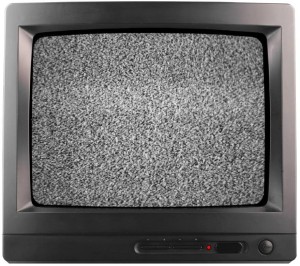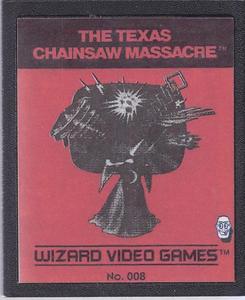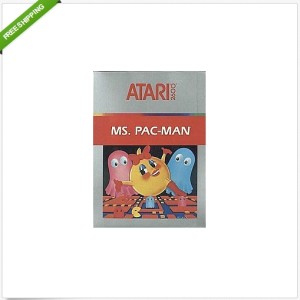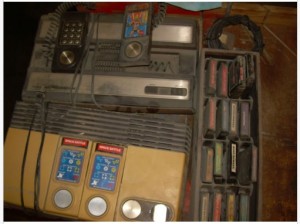 Despite its detractors, eBay remains the best source for buying retro videogames at a good price, even after factoring in shipping costs. However, people can and do have bad eBay experiences. There are usually three kinds of complaints: never receiving the item at all, receiving something different from what was expected, and receiving a damaged item. All three things have happened to me, which is to be expected when you buy hundreds of items a year. Even so, my buying experiences on eBay these days are generally positive, but I attribute that to being a savvy “reader” of eBay auction listings. The more aware you are of “red flags” in eBay listings, the fewer regrets you will have as a buyer.
Despite its detractors, eBay remains the best source for buying retro videogames at a good price, even after factoring in shipping costs. However, people can and do have bad eBay experiences. There are usually three kinds of complaints: never receiving the item at all, receiving something different from what was expected, and receiving a damaged item. All three things have happened to me, which is to be expected when you buy hundreds of items a year. Even so, my buying experiences on eBay these days are generally positive, but I attribute that to being a savvy “reader” of eBay auction listings. The more aware you are of “red flags” in eBay listings, the fewer regrets you will have as a buyer.
Before going any further, I should say that eBay has become much friendlier toward the buyer than in the past. Much of this shift has to do with eBay’s Buyer Protection program, which worked to protect the buyer even if the seller did not accept returns. I’ve used this program multiple times, and I always got my money back if I never received an item or received one that wasn’t as described. The program has recently changed its name to eBay Money Back Guarantee to make it even more clear that buying is safe on eBay. If an item is described as working, I feel confident that I will get my money back one way or the other if it doesn’t work once it arrives. (I am also a Top Rated Seller and also understand that unscrupulous buyers take advantage of sellers by abusing eBay policies, but that topic is an article for another day.)
The following red flags are not ranked in any way, and one may follow another simply because they fit well together.
#10 : Item Is “Untested” or “Was Working When Last Put Away”
Let’s begin with “untested.” You shouldn’t be suspicious of all items described this way. Many sellers just don’t have the time to test every item, and I’ve received many untested items that fired up immediately and worked great. Usually these items sell for less than tested and working items, and sometimes I’m willing to take a chance to save some money. Where does the red flag come in, then? Well, some sellers are just plain lying. They did test the item and know that it doesn’t work. They try to turn their problem into your problem. How do you know if they’re lying? I don’t think you can ever know for sure, but you can get a pretty good idea with just a few mouse clicks. My approach is to look at the other items that they are currently selling and that they have sold. So, if a seller claims that an Intellivision is untested but is selling tested and working Atari 2600s and ColecoVisions (platforms that also use plain ol’ RF output), then I’d find it hard to believe that that Intellivision wasn’t given a once over. Be even warier if the eBay handle is something like “retrogames4u” or “ataristore2600.”
I’m much more suspicious of a seller who says that an item was working when last put away. Again, the person may be telling the truth. But the “was working when last put away” line is worse than the “untested” label because it seems to imply that the item is probably still working. The seller just can’t be bothered to double check for you. Look carefully at the photos. If you happen to see an old fashioned RF switch box connected to a 75 ohm to 300 ohm adapter, there’s no reason that the unit cannot be tested on a modern television. I’d like a seller much more if he or she just came out and said, “This was working when I last put it away, but I’m really not motivated to hook everything up just to make an extra $20, so you’ll get a bargain if you’re lucky.”
These items are usually listed as “as-is” or “no returns.” So be prepared either to eat the cost of broken equipment or to break out that soldering iron. If you expect the item to be trash, then you won’t be as disappointed when it turns out to be just that. If an item is described as working but the seller has a no returns policy, you still may be able to get your money back using eBay’s Money Back Guarantee policy. A no returns policy protects a seller only from wishy-washy buyers who change their minds; it does not allow them to sell untested or broken items without disclosing this information to the buyer.
#9 : Zero Feedback Bidders
You read that right. As a bidder, you need to be concerned about zero feedback bidders in addition to zero feedback sellers. Why? Shill bidding. Shills are users who bid on items with no intention of buying them just to drive up the price. The shill may be a different user, or the shill may be the seller using a different account. Shilling works because eBay uses a proxy bidding system that will automatically raise your bid to your maximum amount if you are outbid. Let’s say that an auction for a loose copy of Lochjaw opens at $0.99. You decide that you are willing to pay $300 for this, so you enter $300 as the maximum amount when you place your bid. You are the first bidder, and you’ve agreed to pay $0.99 for this super rare. Later that day, you see that you are still winning, but now your bid is at $255 because another user, let’s call him s***m, has put in a dozen bids, the last one for $250 (bid increment is $5.00 at this level). An interesting thing about s***m (you don’t get to see the other bidders’ handles) is that he has this symbol after his name: (0). He has zero feedback. How do you know he’s not just a noob who wants to break into Atari collecting with a big splash? Click the “s***m” (it’s a link). You will be able to see how often this user has bid on this particular seller’s auctions, and you will also be able to see how many bid retractions he has had. I’ve bid on thousands of items. I think I have one bid retraction (I can’t even remember). A legitimate buyer will not have multiple bid retractions. Only a shill does.
How do you protect yourself against shills? Easy. Don’t bid until just before the auctions ends. This is called sniping. You’ll either need to be very organized to make sure that you don’t miss the end of the auction, or you should use a sniping service. (I’ve written another article on the practice of auction sniping.)
#8 : Super Rare Games
That Lochjaw you just bought for $299 was certainly a bargain. (Never mind that you became the high bidder only after the other user retracted his bid.) That label sure is minty after thirty-one years, too. Apollo Games really knew what they were doing. You want to know how much it is worth, so you do a little online research. Only, the photos you find show a cartridge label that is slightly different from your own. For the first time, you notice that there is a funny face logo on your label that does not appear on any other others. Congratulations, you just bought a reproduction! It’s worth about ten bucks, maaaybe twenty.
Super rares are a red flag because they may not be the super rares that you think they are. For one, they may be reproductions. Among pre-Crash platforms, Atari VCS/2600 cartridges are the most reproduced. Any enterprising scammer can burn an EPROM and print off a color label. Luckily, it’s fairly easy to spot a reproduction cartridge. Some may even say “reproduction” on the label or sport the logo of Hozer (a goofy face with a tongue sticking out of the mouth), one of the better-known repro “artists.” There won’t be reproductions of common cartridges, only rares and super rares. For some reason, the horror titles such as Halloween and The Texas Chainsaw Massacre spawn more than their share of reproductions. You can also hunt down an image of an authentic cartridge and compare the case to the case on the suspected forgery. Sometimes the person making a reproduction won’t even bother to match the original case.
Even boxes are being reproduced. Reproduction boxes for rare Intellivision games are becoming more and more visible. Most of the time the seller makes it clear that you are buying a repro. But be careful when hitting that Buy It Now for Spiker. Your $1,500 may have just bought you a $500 cartridge, $100 manual, and a $20 repro box. Whether we’re talking about bogus cartridges or boxes, you may have a case with eBay if you can prove that you thought that you were buying an original. But do your homework so that you don’t find yourself in that position to begin with.
Not quite as bad as buying a fake is ponying up for an authentic game that still isn’t what you thought it was. How can this happen? Buying a PAL game when you think you’re getting an NTSC game. PAL stands for “Phase Alternating Line,” a standard for broadcasting analog television outside of North America (which uses the NTSC standard). Please don’t get me wrong. I don’t have anything against Asia, Europe, Australia, Africa, or South America–those continents that in whole or in part had adopted the PAL standard. I just don’t want to collect the games sold in those places. It’s pretty easy to mistake a rare-but-less collected PAL Obelix for a rare-and-desired NTSC Obelix.
#7 : Stock Photos
Stock photos in WordPress blogs = win. Stock photos in eBay listings = not so much. One of my policies for buying on eBay is never to buy an item listed with a stock photo. I highly recommend that you adopt this policy as well. If you don’t spend a lot of time on eBay, it is sometimes difficult to tell whether a photograph comes from eBay’s stock photography collection or not. (Just look for the words “Stock Photo” in very light gray below the photo.) Even worse, the stock photograph does not always match the item being sold. For instance, the photo may show the Ms. Pac-Man game box, but the seller has only a loose cartridge on hand. Be sure to read the fine print in the listing description to see if the seller admits to using a stock photo or to listing the “cartridge only.”
A stock photograph tells you a lot about a seller, none of it very good. At best, the seller couldn’t be bothered to take a photo of something that he or she ostensibly believes that you should have. So, here’s a person for whom pointing-and-shooting is a Herculean chore–are you really going to trust this person to pack and ship your item in a professional manner? Another real possibility is that the seller might not have posted a photo because the item is in terrible shape. So now we have gone from a lazy seller to a slightly dishonest one.
A close cousin to the stock photo listing is the “no description” listing. This is the listing that includes no original information from the seller. The listing includes only the boilerplate information drawn from eBay’s databases. You get no specific item details and no specific seller policies. Nothing. Imagine going to a retail store and seeing a bunch of brown paper bags on the shelf. One says “Frogger, Atari 5200,” and another says “Congo Bongo, Intellivision.” When you buy a game, you are not allowed to speak to the proprietor. You just fork over your cash, get handed a bag, and are asked to leave the store. This isn’t a Yakov Smirnoff joke. It’s eBay.
I think that the scenario that we are all hoping for is that sellers are holding onto gem mint examples of our personal holy grails and are just too darn busy to snap a photo of it because they are listing baby clothes or auto parts–stuff they really know the value of. This is giving the seller way too much of the benefit of the doubt. Do yourself a favor and speed up your eBay searches by ignoring any listing that doesn’t include an original photo or description.
#6 : Dirt
Be careful what you ask for: sometimes getting an original photo is a bad thing. Some original photos are the exact opposite of stock photos: too much information instead of insufficient information. What’s that meme? What has been seen cannot be unseen? Yeah, that applies here.
Most of these consoles and cartridges are over thirty years old, many having sat in a basement or attic for almost as long. They’re going to get a little dusty. Dust settled into a few grooves or crevices is to be expected. Maybe even a missed spot of dried New Coke. Your Storage Wars ambition should stop there, however, because there’s a big difference between dust and other forms of retro nastiness. For instance, don’t even think that you can salvage anything that looks like it has water damage and/or mold. Not only do you stand a greater chance of receiving a dead cartridge or console, but you yourself might die from inhaling the millions of mold spores kicked up by your messiah complex. Mold grows only where it is damp, and as far as retro videogames are concerned, that means basements. Basements also flood. And it’s not pure rainwater coming up out of the floor drain. So not only was that Intellivision kicking back in a sewage-soaked cardboard box, it may actually have been underwater at some point. Even items that do not have visible mold growing on them may be unusable because of a persistent mildew odor. Two years ago, I bought a Vectrex game box that still isn’t right.
How can you tell mold from dirt? Given the quality of eBay photos, it’s not always easy. But there are some telltale signs. Mold will be “fuzzy.” Some patches of it will be thicker and darker in some places. And often it will have a kind of greenish tint to it. Anything made out of paper that has been underwater will discolor and crinkle in spots. I’ve seen tons of cartridge labels that look like this. Manuals too. Even rusty staples on manuals can be a sign of poor storage techniques. Just to be safe, follow the “where there’s smoke, there’s fire” rule. If I can actually see the dirt in the photo, not just dust, I’m going to assume that there’s worse to be found. Mold is the worst, but animal or bug excrement is not pleasant either. Finding dead bugs themselves (usually small cockroaches) inside of consoles is not uncommon.
We’ve gotten this far without even mentioning the kind of person who would sell you something in this condition. Would it kill these sellers to take a Clorox wipe to the plastic? It’s hard to imagine a decent person packing up a mold-caked ColecoVision and thinking that this is normal behavior. Do they really believe that they are being of service to you? However, they are doing you a service; it just happens before money changes hands. If sellers are actually willing to show you all of the crap that you’ll have to inhale or clean off, don’t ignore such a kind gesture. Thank them for saving your money and your health.


















This applies to a LOT MORE than just video games and consoles!!
Posted by michael white | December 17, 2013, 5:02 pmThis was a great and informative read! I’ve been buying and selling on ebay for eight years and you totally nailed the red flags that collectors need to look out for. I especially enjoyed your thorough explanations.
Looking forward to Part 2!
Posted by Mauricio Rios (mojotv67) | January 17, 2014, 1:00 pmThanks — Part 2 is available now!
Posted by boxpressed | January 18, 2014, 8:56 pm